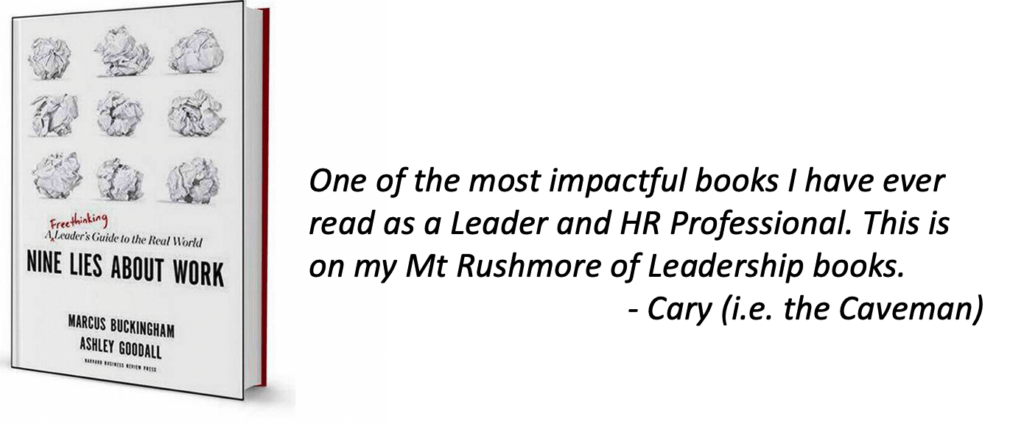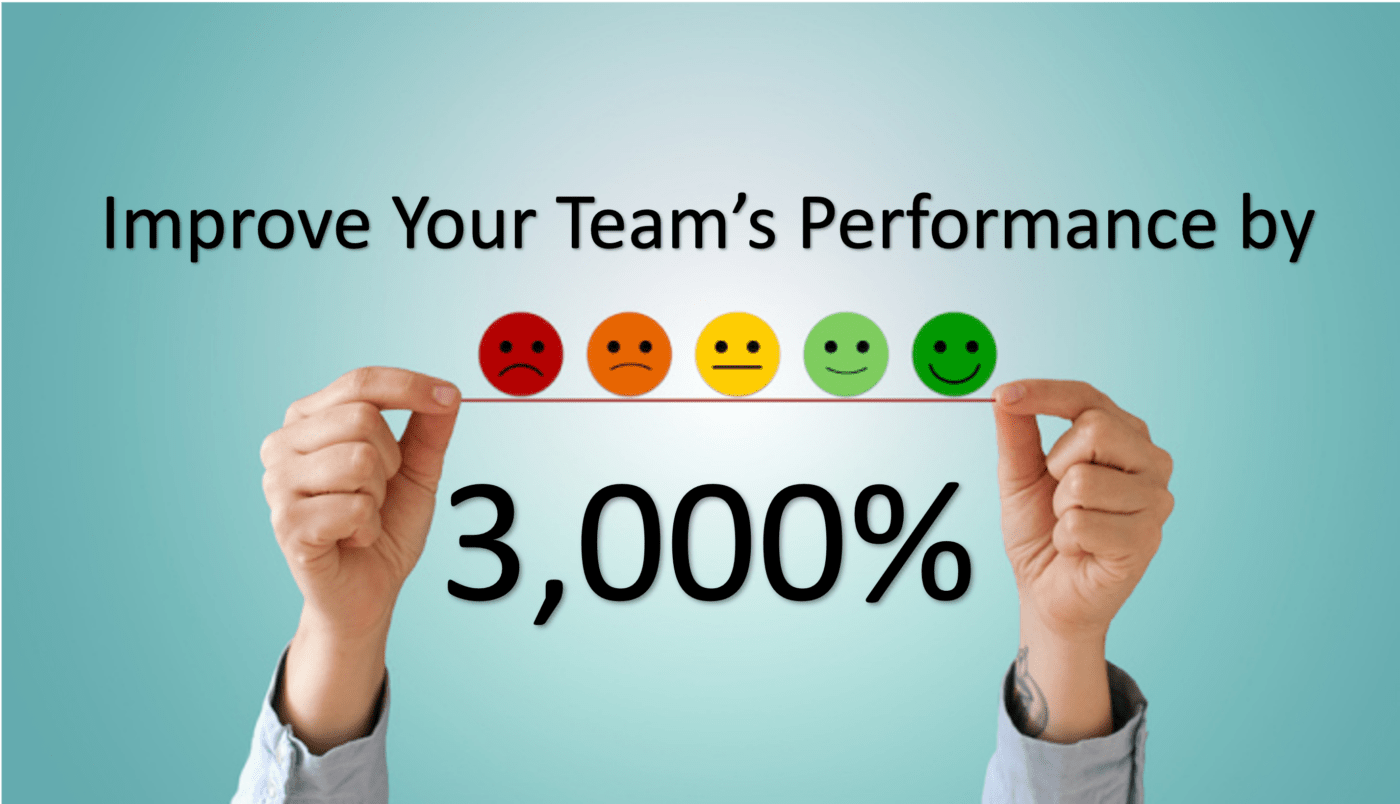Improve Your Team’s Performance by 3,000% (Nine Lies – Lie #5)
One of my favorite research studies occurred in the 1920s-30s at the Hawthorne Electric facility in Illinois. The researchers were investigating different methods to increase the productivity of the workers. First they increased the brightness of the factory, and output went up. Then they dimmed the lighting, and surprisingly the output went up again. So the next day they made it even brighter than before, and the output went up even more.
The researchers also looked at other variables. They found that performance improved when they made their work stations cleaner, kept the factory tidier, provided more food during breaks, and varied the lengths of the breaks or when they occurred. But what was even more surprising was that everytime they changed the condition back to its previous state, output would increase again. And most surprisingly of all, when the study was concluded, performance levels fell back to their original levels.
The researchers ultimately concluded that it wasn’t the different variables that impacted the performance of the workers. What really drove the output increases was that people were paying attention to the workers, and I don’t mean this in some Orwellian context that surveling workers will increase performance. Instead, each intervention demonstrated to the workers that management was interested in them, and that feeling of positive attention led to higher engagement and higher performance.
The simple truth we need to realize is that people crave attention, and when it is given to them in a non-judgemental manner, they improve their performance.
Improve Your Team’s Performance by 3,000% (Nine Lies – Lie #5)
The Nine Lies We All Believed

I was introduced to the criticality of giving people your attention by the book “Nine Lies About Work: A Freethinking Leader’s Guide to the Real World” by Marcus Buckingham and Ashley Goodall. Nine Lies uses research, data, and engaging stories to identify and dismantle some of the most common beliefs we hold about work and replace them with simpler truths. My personal belief is that every senior leader and HR manager needs to read Nine Lies.
I can personally attest that some of my core beliefs about leadership and high performance were completely shook up. For example, I am a huge believer in the power of giving people feedback, both positive and constructive. But after reading Nine Lies, I have started to question the effectiveness of constructive feedback. That is why I have written this article (and the overall series on Nine Lies). My hope is that these articles can open your eyes to the need to think about leadership and talent differently, and I also hope you buy the book.
Improve Your Team’s Performance by 3,000% (Nine Lies – Lie #5)
Everyone Needs Non-Judgemental Attention
The first thing we need to accept is that not all attention is good attention. In a 2009 Gallup study, workers were asked if their manager paid most attention to their strengths, to their weaknesses, or neither. The researchers found that the different focus areas of the managers significantly impacted the workers’ engagement levels. Not surprisingly, the engagement levels of workers craters when managers provide no attention whatsoever.
The next most affective approach was for managers to primarily focus on improvement areas of their people. The researchers found that this was 40 times more effective than providing no feedback at all. That being said, managers who focused on employee shortcomings still had high rates of disengagement in their teams. For every 2 engaged employees there was 1 disengaged teammate. That is a lot, especially when you see the impact of positive feedback.
When the researchers assessed the teams of managers who focused primarily on strengths and giving positive feedback, they found team engagement shot through the roof. For every 60 engaged employees, they could only find 1 disengaged employee. That means that focusing on positive feedback is 30 times more effective than focusing on negative feedback, and 1,200 times more effective than providing no feedback at all.
Improve Your Team’s Performance by 3,000% (Nine Lies – Lie #5)
Positive Attention Creates Growth
Part of the reason positive feedback is so much more impactful than constructive feedback is due to how our brain works. Neurological research shows that negative feedback stimulates the sympathetic nervous system, i.e. your “fight or flight” system. So it makes sense as to why a lot of people are scared of receiving feedback. When they do, their brain triggers their heart rate to increase, their cortisol levels (stress hormone) to increase, and their muscles to tense in preparation of fighting or running away from the ‘danger’.
Even if the feedback giver truly wants to be helpful, the feedback receiver is primed to treat the feedback as a threat. This significantly reduces the likelihood that the person listens to and grows from the feedback. Instead of helping the person learn and develop, feedback focused on what someone did wrong actually hinders learning.
On the other hand, feedback focused on what the person is doing right stimulates another part of the brain; the parasympathetic nervous system. This system is often referred to as the “rest and digest” part of the brain, and has been shown to create a sense of well-being, and a openness to different ways of thinking or feeling. While negative feedback impares learning, positive feedback stimulates learning, reflection, and growth.
Improve Your Team’s Performance by 3,000% (Nine Lies – Lie #5)
Catch People Doing the Right Things
So ask yourself this question. If positive feedback is 3,000% more engaging and provides significantly better opportunities for growth, then why do most of us still focus on managing the shortcomings of others? The unfortunate answer is that our brains are hardwired to focus more on the negatives. Berkeley psychologist Rick Hanson summed it up best by saying “the brain is like Velcro for negative experiences, but like Teflon for positive ones.”
But just because our instinct is to focus on the negative aspects of others, doesn’t mean we cannot change what we give feedback on. It just takes a lot of conscious effort. . Research shows that you need to be giving 5 times more positive feedback then negative feedback if you want to leverage the power of positive feedback. But just telling someone “Good Job” every day isnt going to cut it, and in reality will probably come across as disingenuous.
If you really want to stop giving negative feedback and focus mainly on positive feedback, you need to start “catching people do the right things.” This simple statement was a trademark of the Hall of Fame Football Coach Tom Landry. Coach Landry was famous for this positive feedback approach over his 29 years with the Dallas Cowboys. Instead of pointing out every detail the person did wrong, he would look through hours of tape to find the moments the person did the right thing.
Improve Your Team’s Performance by 3,000% (Nine Lies – Lie #5)
Even Though Its Tough, Stop Giving Constructive Feedback
I have to be honest with you, I have really struggled with this myself. I find myself in meetings focusing on what went wrong, or what myself or the other person should have done better. Trying to stop myself from focusing on the negative is tough, and it most likely will be tough for you as well. It can be frustrating to be in a situation, and to believe “If I just got them to improve X, then everything would be so much better.”
But this is where we all need to channel our inner Tom Landry. If you want someone to stop doing X behavior, and instead do Y behavior, then stop talking about X. Instead, be on the lookout for every time they do Y behavior (or even something close to Y behavior), and give them positive feedback. If you do that consistently enough, not only will the person adopt Y behavior, but they will be highly engaged.
I want to leave you with the final thought. If you have a hammer that is 3,000% percent better at hammering nails than every other hammer, would you still use the underperforming hammers? I imagine you wouldn’t. So why do we still keep constructive feedback as a tool in our leadership toolkit?
Improve Your Team’s Performance by 3,000% (Nine Lies – Lie #5)
Articles on the Other Nine Lies
- People don’t care which company they work for, they care about which team they are on. (Lie #1)
- Stop Cascading Goals & Start Cascading Purpose (Lie #3)
- The best people are not well rounded, they are unique. (Lie #4)
- People don’t have potential, they have momentum (Lie #7)
- You are not a leader if no one follows you (Lie #9)





Great content! Keep up the good work!